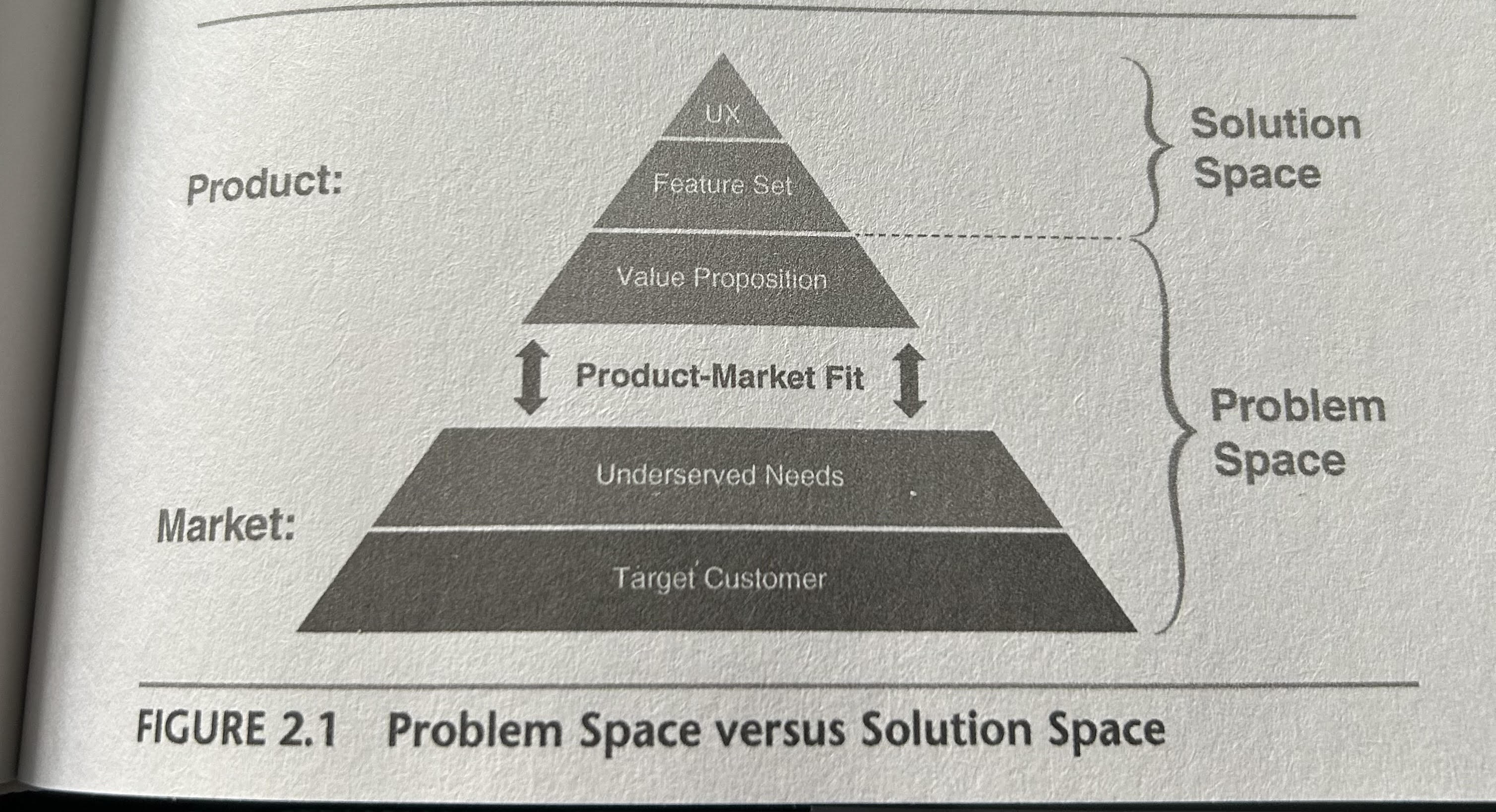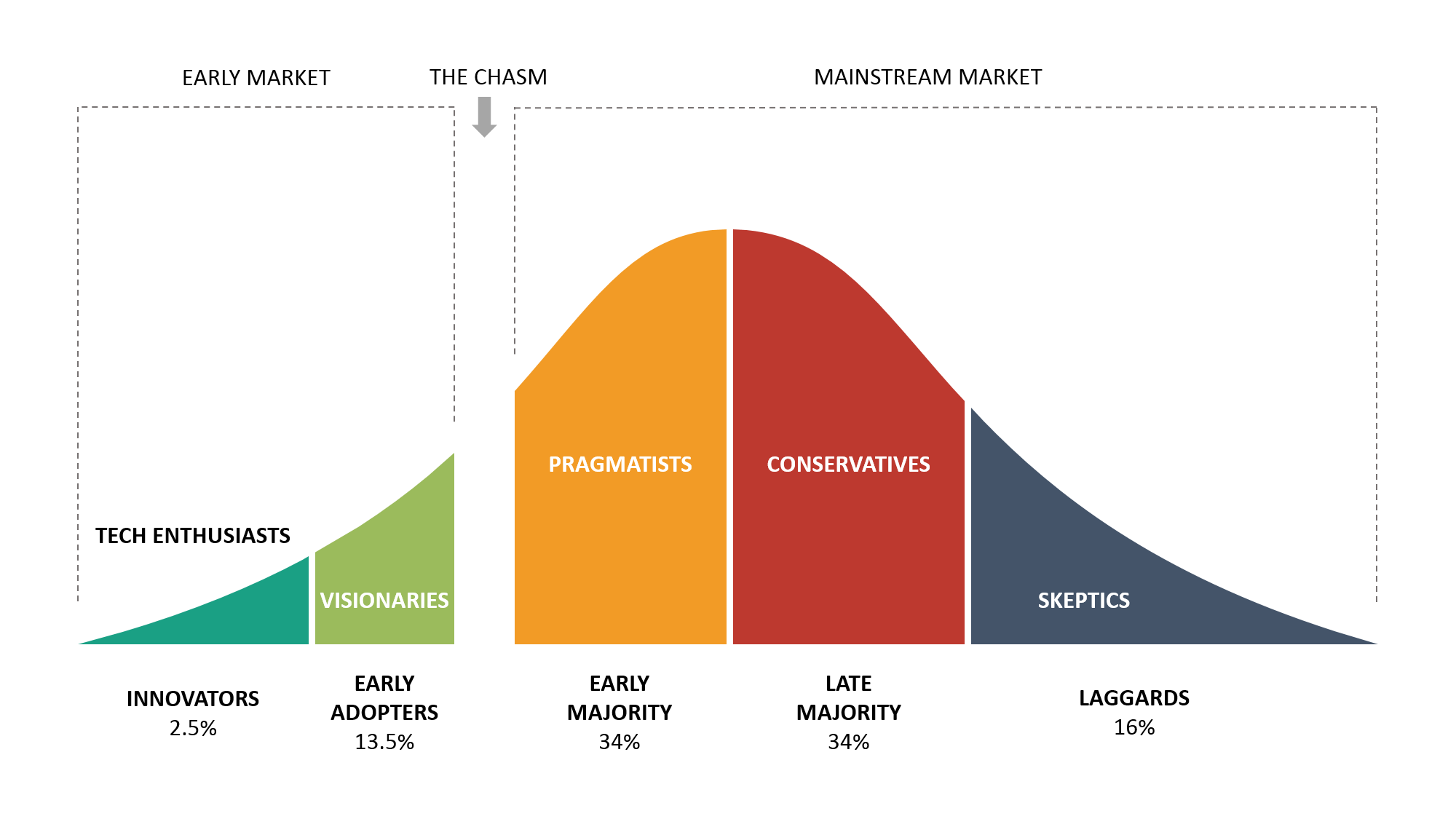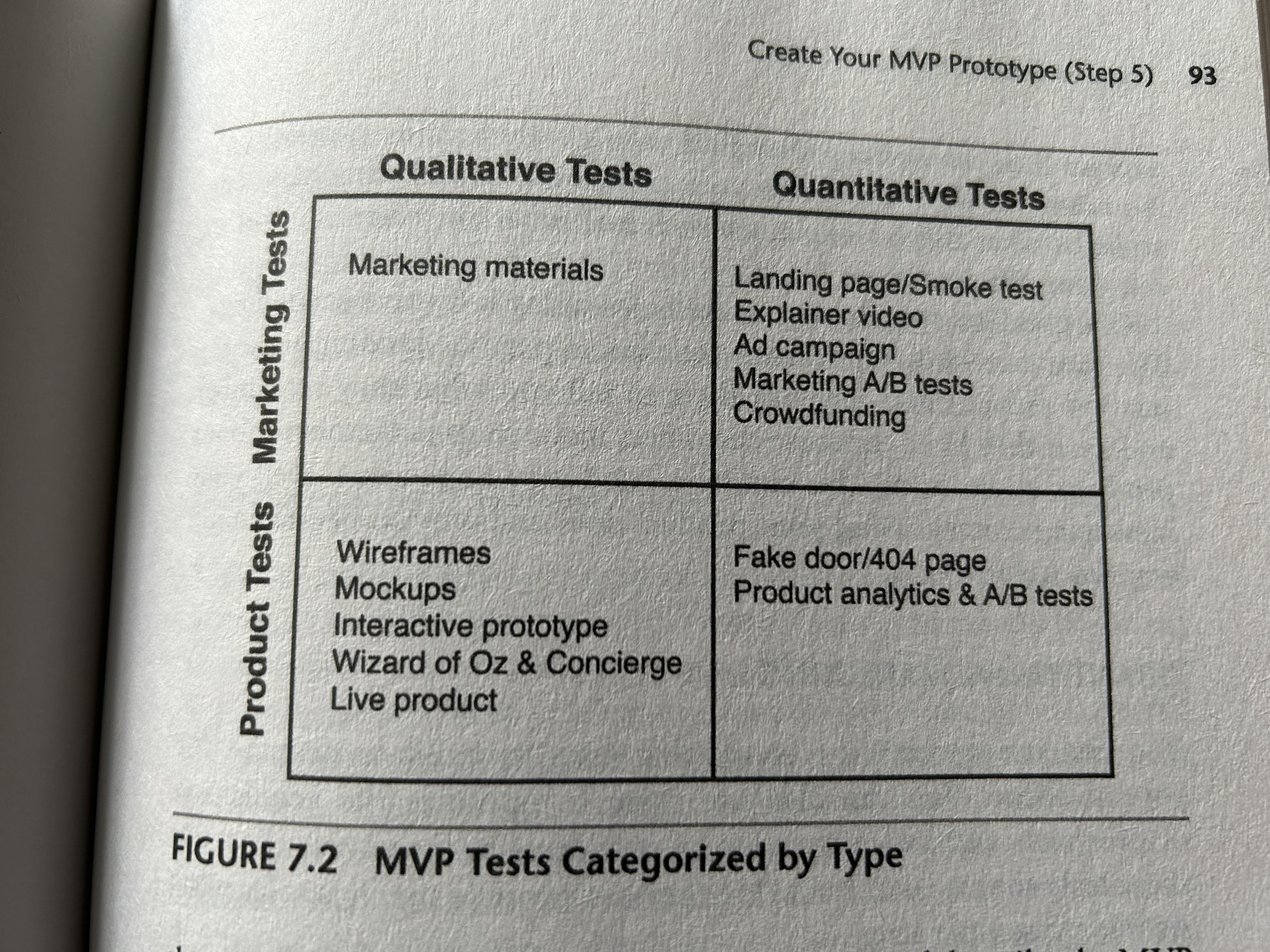The Lean Product Playbook - Notes
Some notes from a recent read of The Lean Product Playbook.
Core Concepts
Product-market fit: Being in a good market, with a product that can satisfy the market i.e you have built something that creates real customer value, and it does this better than alternatives.
The term was originally coined by Marc Andreeson back in 2007.
Market: Target customers who have an Underserved (unmet, or unsatisfactory) need.
Product: A specific offering of functionality or features that meets the needs of the customer.
Success criteria depends on how well your product (top three layers) satisfies the market (bottom two layers)

The Lean Product Process
Determine your Target Customer
Identify who your customer is - segmenting the market based on demographic, psychographic, behavioural, and needs based attributes. Be aware of the technology adoption lifecycle from Geoffrey Moore.

NB: Users can differ from Buyers, especially in a B2B product offering.
Identify Underserved Needs
Identifying what needs your product must serve for this potential customer segment.
Candidate frameworks include:
Importance vs Satisfaction Framework
Importance: A measure of how important a particular customer need is. Use a 5 point scale from negative to positive*
Satisfaction: Satisfaction level with any existing product. Use a 7 point scale from negative to positive*
*Research has shown that 5 point scales are best for unipolar, but 7 point is best for bipolar.

Gap Analysis Framework
Gap = Importance - Satisfaction
The larger the Gap, then the more underserved the customer’s need is.
Jobs to be Done Framework (preferred over Gap Analysis)
Opportunity Score = Importance + Max(Importance-Satisfaction,0)
Customers decide to buy based on how well it delivers their “desired outcomes” for the “jobs to be done”.
Ultimately, we want to find the needs that add the most value for the customer.
NB: The “Vitamin vs Painkiller” classification is very relevant here. Are we creating a real problem solver, or are we a “nice to have”?
Define your Value Proposition
Which of the important customer needs could we be addressing?
This chapter refers to ranking the features and benefits. The author uses the KANO method, which adopts a classification of basic (must-haves), performance (better), and delighters (unexpected), and compares against the competition.
MoSCoW could also be used. Whatever the framework or system, we should yield a clear understanding of our value proposition.
Specify MVP
What is the absolute bare minimum that we need to deliver, to validate that we are heading in the right direction.
We need to be weighing up the investment vs the return.
Using traditional agile methodologies and best practices, we would favour small batches, described via measurable User Stories.
Remember Bill Wake’s INVEST acronym for stories.
Independent, Negotiable, Valuable, Estimable, Small, Testable.
Decide on the MVP candidate, with awareness for the estimated ROI (Return on Investment).
Our MVP should not be only basic, but include slices of performance and delight.
Create MVP Prototype
Our MVP should not be only basic, but include slices of performance and delight. Think of it as a subset of the KANO pyramid. Our MVP needs to be testable, and for this, there are different categories of test.
Product vs Marketing, and Quantitative vs Qualitative.

Test & Iterate
Qualitative user feedback on your offering (the product itself, or a design deliverable such a wireframe).
Ideally, speak with one customer at a time to maximise value (sidesteps any potential group dynamic and biases).
Favour open questions over closed.
Be sure to differentiate feedback on usability, versus feedback on product market fit.
Synthesise the feedback such that it can power the Hypothesize-Design-Test-Learn loop.
Pivot when necessary (e.g if target customers are only lukewarm and there is little to no excited from them)
Building and Optimising
This section describes using Agile processes such as Scrum and Kanban for Product delivery. No notes taken.